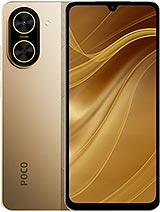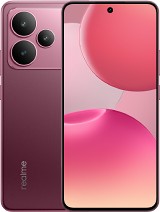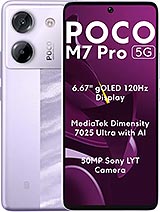Poco C71 4G alternatives
Tap above to see alternatives.
Tecno Spark 20 Pro alternatives
Tap above to see alternatives.
Poco C71 4G

Poco C71 4G
-
Unisoc T7250
12 nm
-
5200 mAh
15W
-
6.88"
720 x 1640 pixels
-
32 MP
1080p@30fps
- Specs
Tecno Spark 20 Pro

Tecno Spark 20 Pro
-
Dimensity 6080
6 nm
-
5000 mAh
33W
-
6.78"
1080x2460 pixels
-
108 MP
1440p@30fps
- Specs
2x1.8 GHz Cortex-A75
6x1.6 GHz Cortex-A55
2x2.4 GHz Cortex-A76
6x2.0 GHz Cortex-A55
6GB 128GB (eMMC 5.1)
8GB 256GB (UFS 2.2)
f/1.8, (wide)
Auxiliary lens
f/1.8, (wide), 1/1.67", 0.64µm, PDAF
2 MP
f/2.4, (macro)
1080p@30fps
f/2.0, (wide)
wide
1080p@30fps
SIM1: Nano, SIM2: Nano
SIM1: Nano, SIM2: Nano
2 5G bands
n3, n40
In this performance comparison, the Tecno Spark 20 Pro with its Mediatek Dimensity 6080 (6nm) performs better than the Poco C71 4G with the Unisoc Unisoc T7250 (12nm), thanks to superior chipset efficiency.
Poco C71 4G launched with Android 15 and will receive updates, while Tecno Spark 20 Pro has no confirmed OS update information. Poco C71 4G receives 4 years of security updates, while Tecno Spark 20 Pro does not have confirmed info.
Both Poco C71 4G and Tecno Spark 20 Pro use LCD screens. Both smartphones offer the same 120 Hz refresh rate. Poco C71 4G also boasts a brighter screen with 600 nits of peak brightness, enhancing outdoor visibility. Notably, Tecno Spark 20 Pro offers a higher screen resolution, resulting in sharper visuals and more detailed content.
Poco C71 4G comes with a larger 5200 mAh battery, which may offer longer usage on a single charge. Tecno Spark 20 Pro also supports faster wired charging at 33W, compared to 15W on Poco C71 4G.
Tecno Spark 20 Pro offers better protection against water and dust with an IP53 rating.
¹ Scores can vary even with the same chipset due to RAM, thermals, and software optimization.










